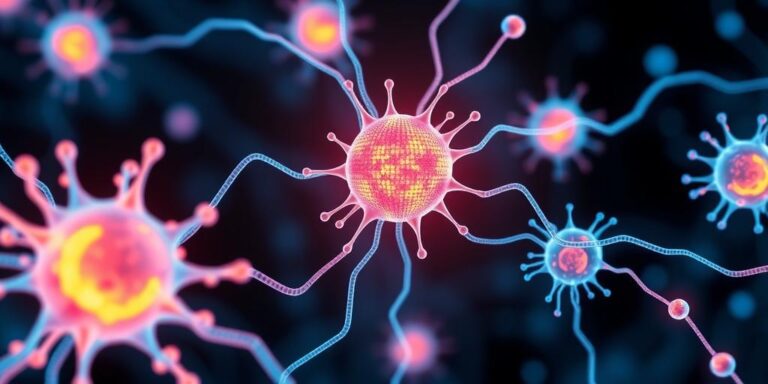Biological Computing: Harnessing Living Cells (2035 Vision)
Imagine a world where computers aren’t built from silicon and circuits, but from living cells. This isn’t science fiction; it’s the burgeoning field of biological computing, and by 2035, it’s poised to revolutionize technology as we know it.
What is Biological Computing?
Biological computing uses living cells, such as bacteria or human cells, to perform computational tasks. These cells can be engineered to act as biological circuits, processing information and responding to stimuli in predictable ways. Instead of electrons flowing through wires, biological computers use molecules like DNA, RNA, and proteins to encode and manipulate data.
Key Components of Biological Computing Systems:
- Sensors: Engineered to detect specific inputs, such as light, chemicals, or temperature.
- Processors: Biological circuits that perform logical operations based on sensor input.
- Actuators: Output modules that produce a response, like synthesizing a drug or emitting light.
- Memory: DNA or RNA sequences that store information within the cell.
The Promise of Biological Computing:
By 2035, biological computing is expected to offer several advantages over traditional silicon-based computers:
- Energy Efficiency: Biological systems are incredibly energy-efficient, potentially reducing the power consumption of computing.
- Biocompatibility: Biological computers can interact directly with living systems, opening doors for advanced medical diagnostics and therapies.
- Parallel Processing: Cells can perform numerous calculations simultaneously, enabling massive parallel processing.
- Self-Assembly and Repair: Biological systems can self-assemble and even repair themselves, leading to more robust and resilient computers.
Applications in 2035:
- Medicine: Personalized drug delivery systems that target cancer cells with pinpoint accuracy. Smart implants that monitor vital signs and release medication as needed.
- Environmental Monitoring: Biosensors that detect pollutants in real-time, providing early warnings of environmental hazards.
- Manufacturing: Self-assembling materials with tailored properties for various applications.
- Data Storage: High-density DNA-based data storage systems capable of storing vast amounts of information in a tiny space.
Challenges and Opportunities:
Despite its immense potential, biological computing faces several challenges:
- Complexity: Biological systems are inherently complex, making them difficult to engineer and control.
- Reliability: Ensuring the reliability and reproducibility of biological computations is crucial.
- Scalability: Scaling up biological computing systems to handle complex tasks requires further advancements.
- Ethical Concerns: The use of living organisms in computing raises ethical questions that need careful consideration.
The Future is Biological
Biological computing in 2035 promises a paradigm shift in how we approach computation, with the potential to solve problems currently intractable for conventional computers. As research progresses and technology matures, we can expect to see biological computers playing an increasingly important role in various aspects of our lives, from healthcare to environmental sustainability.




